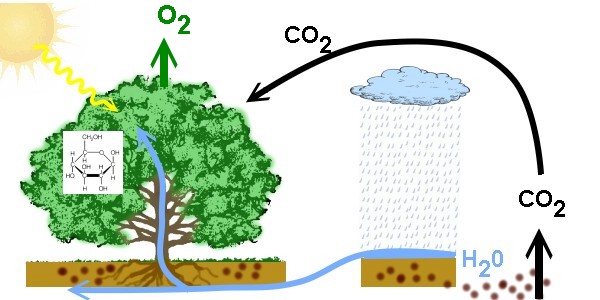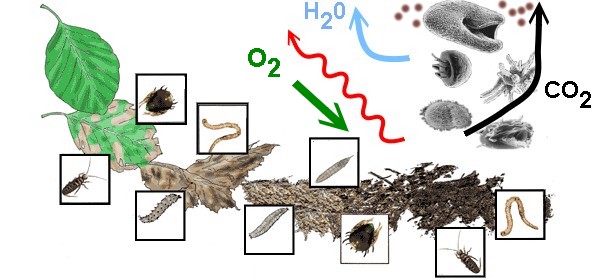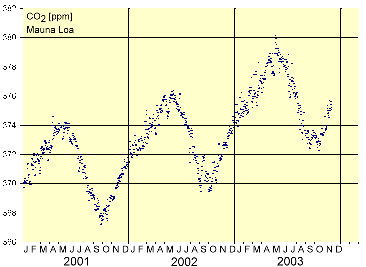 > ACCENT en > No 1 May 2005 vegetation/CO2 > C: photosynthesis and plant emission
> ACCENT en > No 1 May 2005 vegetation/CO2 > C: photosynthesis and plant emission
|
Context
|
|
We learned in our biology lessons about the process of photosynthesis. With the help of energy from the sun, plants convert carbon dioxide (CO2) and water (H2O) into organic biomolecules (glucose in the first step) and oxygen (O2). In order to grow plants also need some other compounds: minerals, phosphate, nitrate, etc. We show these additional compounds in the scheme below as brown dots. Most importantly: While plants grow, they take up CO2 and release O2.
|
 |
|
|
 |
|
1. a+b) Natural cycle of biomass formation and biomass degradation. The grey organisms in the lower picture are bacteria and soil microorganisms.
|
|
At the same time biomass decomposes. We know that in autumn many trees lose their leaves. They fall to the ground. Small animals like insects, worms, larva and mites decompose and digest them. Humus is formed. Bacteria cause further decomposition (so called mineralisation) and produce carbon dioxide, water and some minerals. During decomposition energy is released, the organisms take up oxygen and release carbon dioxide as do we the larger animals. The cycle is closed.
|
|
|
|
Plants convert carbon dioxide and water into bio-molecules, build cells from molecules, leaves, wood and other tissue from cells. However, plants do not only release oxygen to the air in photosynthesis or carbon dioxide when they breathe. They also emit a wide range of organic chemicals in smaller amounts . The most abundant are isoprene (a small molecule containing 5 C-atoms) and terpenes. The latter are larger and form the basis for the flavour of the forest and many fruits and flowers. These compounds are emitted when light falls on the vegetation, when temperature increases and when plants are stressed (drought, injuries, infestation by parasites). The larger emitted molecules tend to form particles after oxidation.
|


